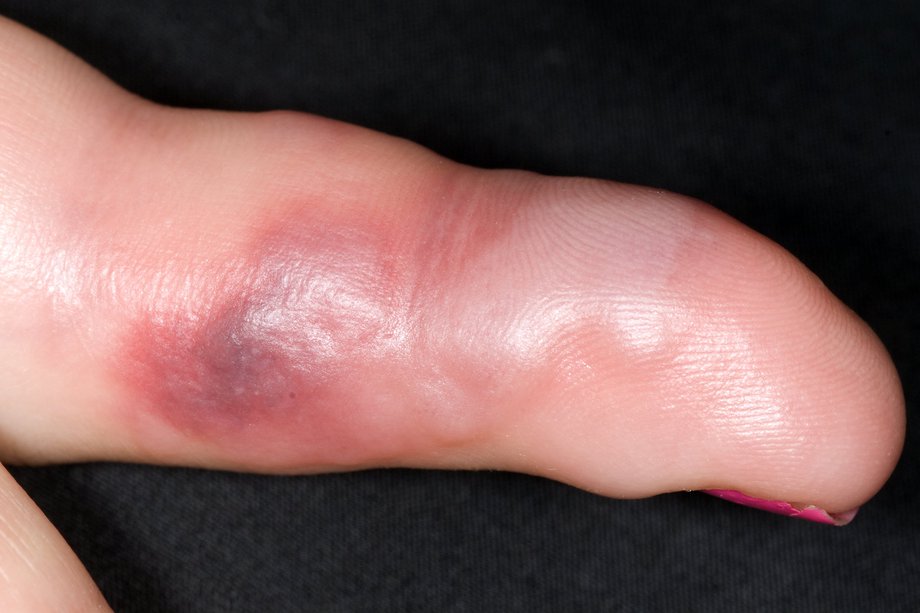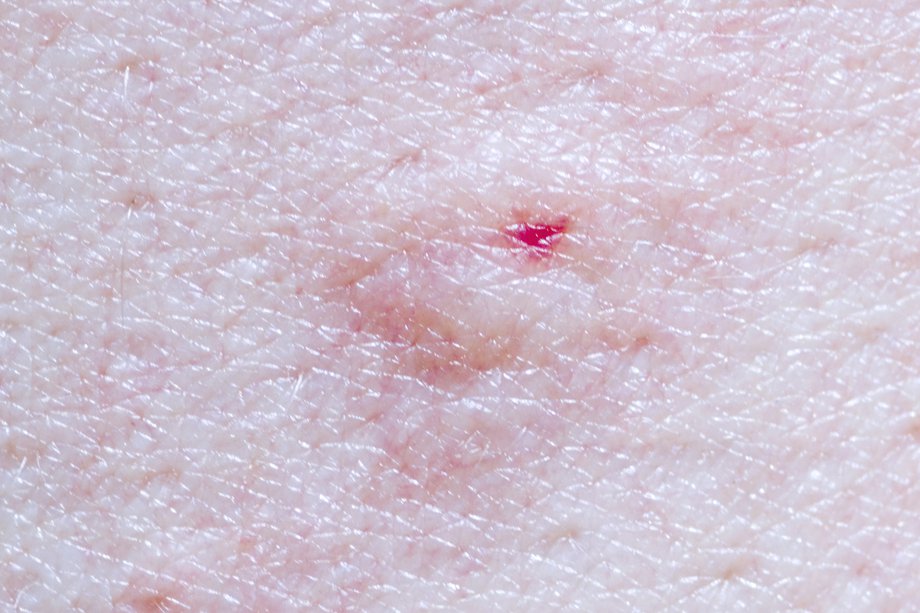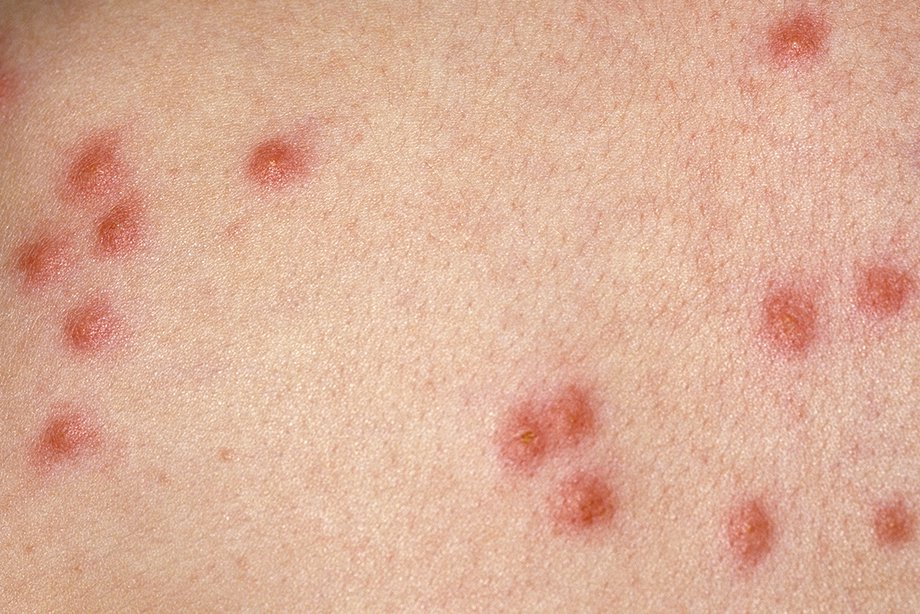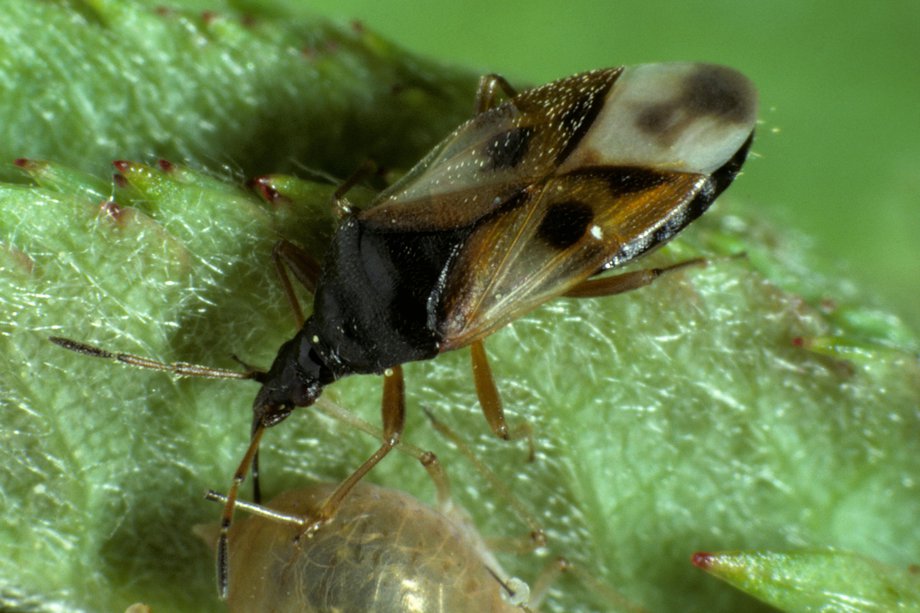SymptomsInsect bites and stings
An insect bite or sting often causes a small, red lump on the skin, which may be painful and itchy.
Many bites will clear up within a few hours or days and can be safely treated at home.
It can be difficult to identify what you were bitten or stung by if you did not see it happen. But do not worry if you're not sure – the treatment for most bites and stings is similar.
Wasp and hornet stings

A wasp or hornet sting causes a sudden, sharp pain at first. A swollen red mark may then form on your skin, which can last a few hours and may be painful and itchy.
Sometimes a larger area around the sting can be painful, red and swollen for up to a week. This is a minor allergic reaction that is not usually anything to worry about.
A few people may experience a serious allergic reaction (anaphylaxis), causing breathing difficulties, dizziness and a swollen face or mouth. Dial 999 for an ambulance immediately if you have these symptoms.
Bee stings

A bee sting feels similar to a wasp sting, but the sting will often be left in the wound. See treating insect bites for advice about how to remove this safely.
The sting can cause pain, redness and swelling for a few hours. As with wasp stings, some people may have a mild allergic reaction that lasts up to a week.
Serious allergic reactions can also occasionally occur, causing breathing difficulties, dizziness and a swollen face or mouth. Dial 999 for an ambulance immediately if you have these symptoms.
Mosquito bites

Bites from mosquitoes often cause small red lumps on your skin. These are usually very itchy. Some people may also develop fluid-filled blisters.
Mosquitoes don't cause major harm in the UK, but in some parts of the world they can spread serious illnesses such as malaria.
Get medical help right away if you develop worrying symptoms, such as a high temperature, chills, headaches and feeling sick, after a mosquito bite abroad.
Tick bites


Tick bites are not usually painful, so you may not realise you've been bitten straight away.
Symptoms of a tick bite can include:
- a small red lump on the skin
- swelling
- itchiness
- blistering
- bruising
Ticks in the UK can sometimes carry a potentially serious infection called Lyme disease, so they should be removed as soon as possible if you find one attached to your skin.
See your GP if you develop any symptoms of Lyme disease, such as a rash that looks like a "bull's-eye on a dartboard" or a fever.
Horsefly bites

A bite from a horsefly can be very painful and the bitten area of skin will usually be red and raised.
You may also experience:
- a larger red, raised rash (called hives or urticaria)
- dizziness
- weakness
- wheezing
- part of your body becoming puffy and swollen
Horsefly bites can take a while to heal and can become infected. See your GP if you have symptoms of an infection, such as pus or increasing pain, redness and swelling.
Midge or gnat bites

Midge and gnat bites often look similar to mosquito bites.
They usually cause small, red lumps that can be painful and very itchy, and can sometimes swell up alarmingly.
Some people may also develop fluid-filled blisters.
Bedbug bites

Bedbug bites typically occur on the face, neck, hands or arms. They're typically found in straight lines across the skin.
The bites are not usually painful, and if you've not been bitten by bedbugs before, you may not have any symptoms.
If you have been bitten before, you may develop itchy red bumps that can last for several days.
Mite bites

Mite bites cause very itchy red lumps to develop on the skin and can sometimes also cause blisters.
Mites usually bite uncovered skin, but you may be bitten on your tummy and thighs if your pet has mites and has been sitting on your lap.
Some mites burrow into the skin and cause a condition called scabies.
Flea bites

Flea bites can cause small, itchy red lumps that are sometimes grouped in lines or clusters. Blisters may also occasionally develop.
Fleas from cats and dogs often bite below the knee, commonly around the ankles. You may also get flea bites on your forearms if you've been stroking or holding your pet.
Spider bites

Bites from spiders in the UK are uncommon, but some native spiders – such as the false widow spider – are capable of giving a nasty bite.
Spider bites leave small puncture marks on the skin, which can be painful and cause redness and swelling.
Some spiders bites can cause you to feel or be sick, sweating and dizziness. Bites can also become infected or cause a severe allergic reaction in rare cases. Get medical help immediately if you have any severe or worrying symptoms after a spider bite.
Ant stings and bites
The most common ant in the UK, the black garden variety, does not sting or bite, but red ants, wood ants and flying ants sometimes do.
Ant bites and stings are generally harmless, although you'll probably feel a nip and a pale pink mark may develop on your skin.
Sometimes the bitten area may be painful, itchy and swollen.
Ladybird bites

All ladybirds can bite, but a type called the harlequin ladybird found throughout much of the UK is more aggressive and tends to bite more often.
The harlequin ladybird can be red or orange with multiple spots. Look out for a white spot on its head – other ladybirds do not have these patches.
Ladybird bites can be painful, but are not usually anything to worry about.
Flower bug bites

Flower bugs are common insects that feed on aphids and mites. You can identify the common flower bug by its tiny oval body, reflective wings and orange-brown legs.
Flower bugs bites can be painful and very itchy, and are often slow to heal.
Caterpillar hairs
The caterpillars of the oak processionary moth are a real pest. They were first found in the UK in 2006 and are now in London and parts of southeast England.
In late spring and summer, the caterpillars have thousands of tiny hairs that can cause itchy rashes, eye problems and sore throats – and very occasionally breathing difficulties. The caterpillars walk up and down trees in nose-to-tail processions.
If you find them, or spot one of their white silken nests, report it to the Forestry Commission or to your local council.